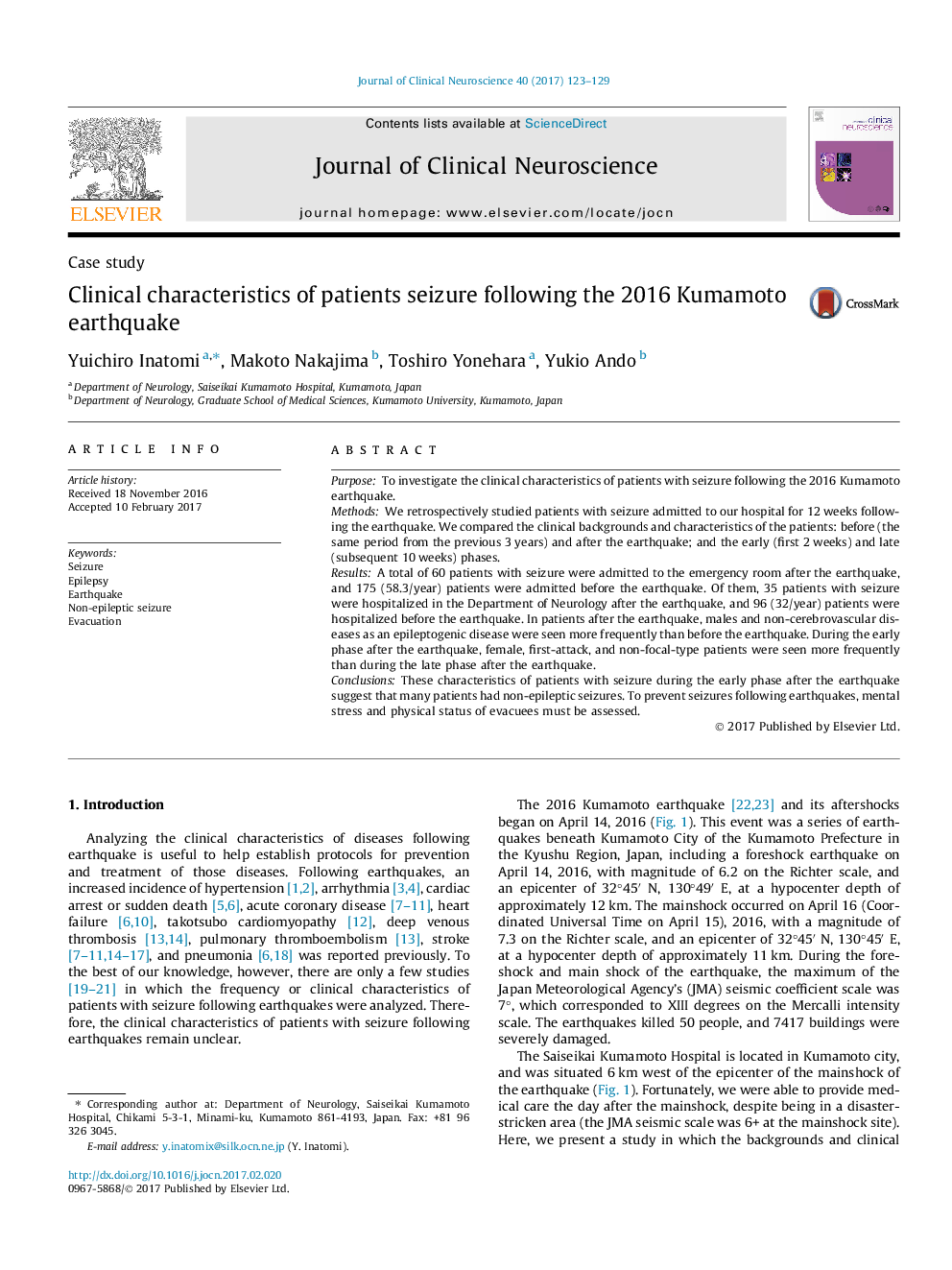| Article ID | Journal | Published Year | Pages | File Type |
|---|---|---|---|---|
| 5629712 | Journal of Clinical Neuroscience | 2017 | 7 Pages |
â¢We studied patients with seizure following the 2016 Kumamoto earthquake.â¢After the earthquake, their epileptogenic disease were mainly non-stroke.â¢During the early phase, many of them had a first and non-focal-type seizure.â¢Many patients with seizure might had non-epileptic seizure after the earthquake.
PurposeTo investigate the clinical characteristics of patients with seizure following the 2016 Kumamoto earthquake.MethodsWe retrospectively studied patients with seizure admitted to our hospital for 12Â weeks following the earthquake. We compared the clinical backgrounds and characteristics of the patients: before (the same period from the previous 3Â years) and after the earthquake; and the early (first 2Â weeks) and late (subsequent 10Â weeks) phases.ResultsA total of 60 patients with seizure were admitted to the emergency room after the earthquake, and 175 (58.3/year) patients were admitted before the earthquake. Of them, 35 patients with seizure were hospitalized in the Department of Neurology after the earthquake, and 96 (32/year) patients were hospitalized before the earthquake. In patients after the earthquake, males and non-cerebrovascular diseases as an epileptogenic disease were seen more frequently than before the earthquake. During the early phase after the earthquake, female, first-attack, and non-focal-type patients were seen more frequently than during the late phase after the earthquake.ConclusionsThese characteristics of patients with seizure during the early phase after the earthquake suggest that many patients had non-epileptic seizures. To prevent seizures following earthquakes, mental stress and physical status of evacuees must be assessed.
